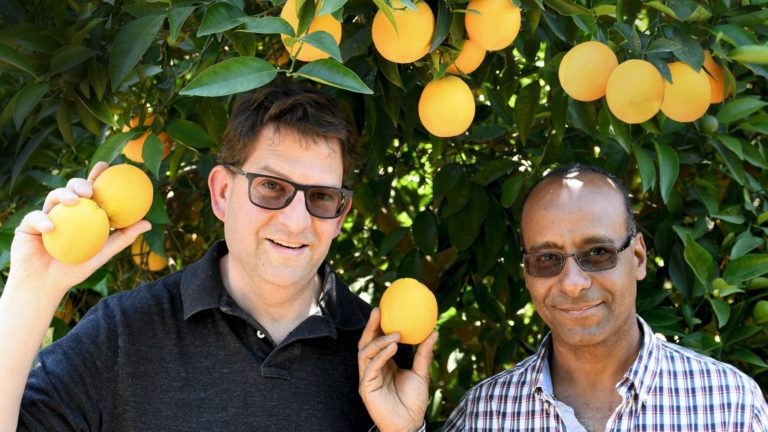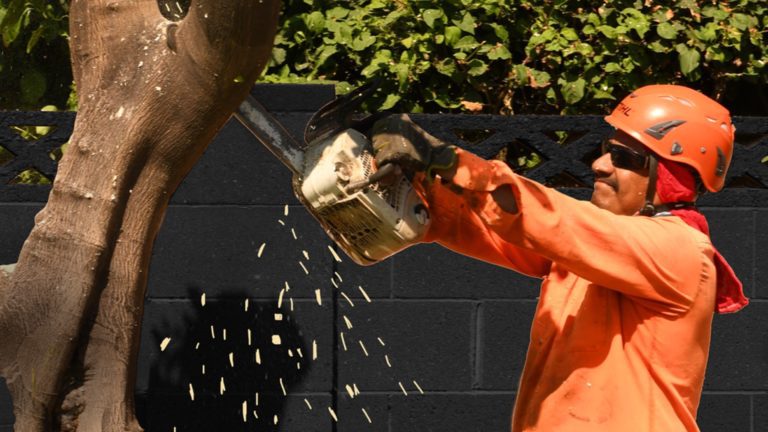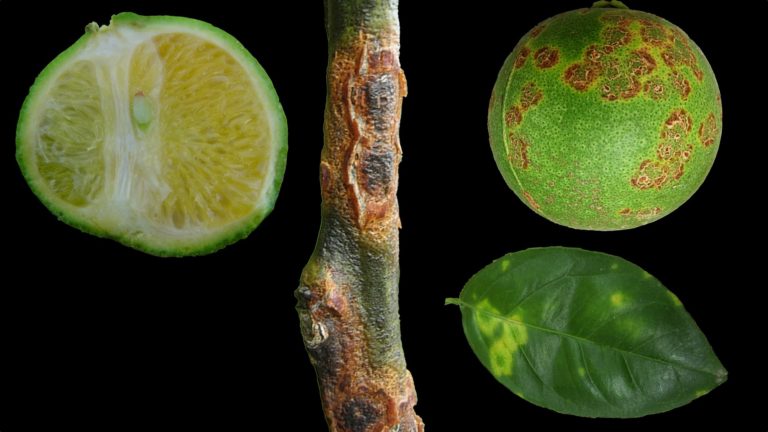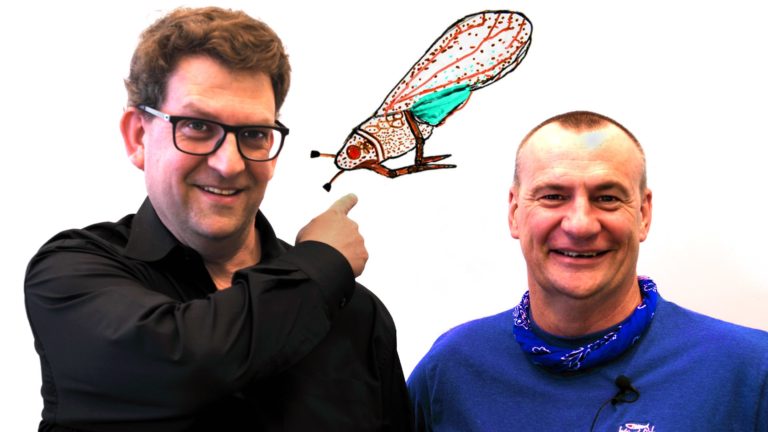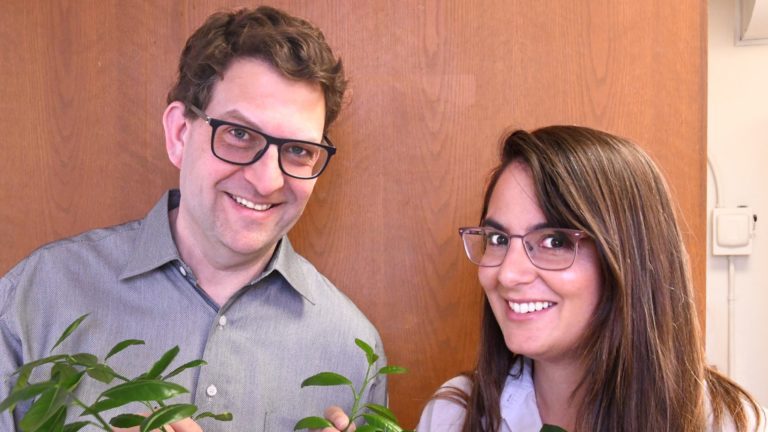Asian Citrus Psyllids and Huanglongbing – Your questions answered by Victoria Hornbaker and the CDFA
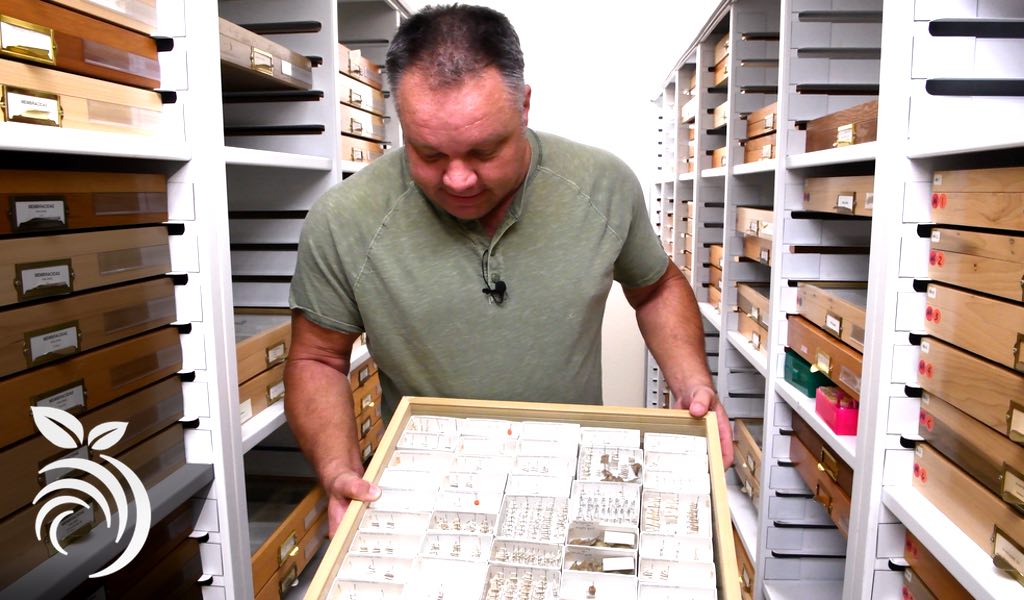
In the following video, I visited the Plant Pest Diagnostics Center in Sacramento, California to get answers to reader and viewer questions on Asian citrus psyllids and huanglongbing disease (also sometimes called HLB, citrus greening disease, and yellow dragon disease). The questions were answered by Victoria Hornbaker and the California Department of Food and Agriculture (CDFA). Victoria is the director of the citrus program at the CDFA.
Below you will find the resources mentioned in the video as well as a transcript.
Resources
California Department of Food and Agriculture (CDFA) Hotline: 1-800-491-1899
California Citrus Threat website
California Citrus Threat YouTube channel
University of California Agriculture and Natural Resources
UC Cooperative Extension
UC Master Gardener Program
University of California Integrated Pest Management
Certified Citrus Budwood
Citrus Clonal Protection Program
How to Order Certified Citrus Budwood
Quarantine Maps
Huanglongbing
Asian citrus psyllid
Asian Citrus Psyllids and Huanglongbing – Transcript
Spread of Huanglongbing
Question: Where is HLB spreading and what areas are most at risk?
Answer: So right now, we're finding the disease expanding in areas where we've currently already found it like LA, Orange, and Riverside, but that's because we're intensively surveying those areas. We have about 60 surveyors out, surveying these areas daily. They're sending samples here to lab where they're being processed. The problem is, this disease could be anywhere in the state. Anywhere where citrus is currently, we could have the disease so we want folks to be very vigilant. Keep an eye on your trees. Look for symptoms of the disease and the Asian citrus psyllid. And if you find those, please report that to CDFA at the 1-800-491-1899 call-in number.
Question: How is HLB spreading and why does it seem to be spreading so rapidly?
Answer: Huanglongbing or HLB is caused or associated with a bacteria. This is not your typical bacteria because you cannot grow this bacteria outside of its host. It can only live inside the plant or inside its vector or insect called the Asian citrus psyllid. The Asian citrus psyllid is the way that this bacteria spreads itself from tree to tree. When the ACP feeds on an infected tree, it takes in that bacteria and then moves on to another tree and if that tree is healthy and it feeds on that, it's going to transfer the bacteria to that. So that's its mode of transmission. And another way that it's spread is by grafting infected budwood. This is a diagnostics lab and so what we do here is to test for the presence of the bacteria in the insect and also in the plants. Over the years, we have developed a high throughput method for detecting the bacteria and because we have the robotics now to help us out, we have the capacity to test 138,000 samples a year. We are now able to detect infected trees at a much faster rate and we are up to almost 1,500 positive trees right now, all of them in residential areas in Los Angeles, Orange County, and in Riverside County.
Question: There's been so much scientific research on ways to reduce the spread of HLB. Is the solution almost ready?
Answer: As a diagnostician, it is our responsibility to continuously improve upon our technique so that we can continue to increase our efficiency, continue increasing the specificity of our tests. This is the state-of-the-art testing method that we have right now for HLB in the state of California. But there are many other researchers out there that's also working on developing other techniques, techniques that are called earlier detection technologies where they can detect the presence of the bacteria at the initial stages of infection. They're also using dog detectors. That is an example of an EDT. The dogs are being trained to smell the specific odors that are coming out of a tree that's infected with HLB. Now, are we close to solving the problem? No. We still do not have a cure for this disease, because there's so many challenges associated with this disease. The bacteria, you cannot grow. And there are also researchers out there that are working on finding varieties that are showing tolerance to this disease and so I think that the research that's going on, we're making a lot of progress. We're not there yet, but we are making a lot of progress managing and living with this disease.
Grafting with Non-certified Budwood
Question: Does grafting with imported budwood or otherwise non-certified budwood really contribute to the spread of HLB since the disease is already in California?
Answer: It is never okay to graft non-certified budwood. Yes, we do have the disease here in California, we have HLB in California, but it's in limited areas and we don't want to potentially spread it outside of the quarantine zones. We have six known genotypes right now in California basically telling us that there may have been six different introductions of HLB in our state. If you graft with non-certified budwood or imported non-certified budwood, then you can potentially spread the disease outside of these quarantine zones and you could potentially introduce another strain of HLB here in California that is even more virulent than what we have right now.
Avoiding the Spread of Huanglongbing
Question: What actions can people take to avoid the spread of HLB?
Answer: To prevent the spread of huanglongbing or HLB, don't move any potted citrus plants or plant parts that could potentially become a new plant from the HLB quarantine zone. If you're sharing fruit, make sure you remove all your stems and leaves and please share that fruit locally, don't move it very far from your home. We want to make sure that we're not taking any chances to spread the disease. If you feel like you might have Asian citrus psyllid or huanglongbing on your property, please contact your local home and garden center to find out if there are any local remedies that you might want to use for the Asian citrus psyllid to suppress the populations and contact CDFA at the 1-800-491-1899 number and they can send someone out to look at your tree to see if it has HLB.
If there are Asian citrus psyllid in the environment, it doesn't matter if you're growing your tree indoors or outdoors, your tree's at risk. You could inadvertently bring psyllids in on your body or through the door that could feed on your citrus tree and spread the disease.
Quarantines and Moving Citrus Trees
Question: If people live in the HLB quarantine zone, can they bring trees into the quarantine zone from outside the quarantine zone? And can they move citrus trees within the quarantine zone?
Answer: If you live in an HLB quarantine zone, you can move trees from outside the area into the HLB quarantine zone, however, it's not recommended. There's bacteria in the environment and the potential that your trees will get infested exists. Now, the question also might be: can I move trees around the HLB quarantine zone? Again, that is not recommended. We don't want to take a chance of moving that bacteria from one location to another because those quarantine zones are five square miles and we don't want to move that bacteria in that five-square-mile area.
Treating Huanglongbing Infected Trees
Question: Are there any organic remedies such as compost tea that could be used to treat an HLB-infected tree?
Answer: There are no remedies for HLB, organic or otherwise. If your tree comes down with HLB, it needs to be removed immediately. By removing your tree, you're protecting the other trees in your yard, in your neighborhood, your community, and in the state, and we all have a stake in California citrus.
Are Trees with Asian citrus psyllids infected?
Question: If Asian citrus psyllids are found in a citrus tree, does that mean that the tree is infected with huanglongbing? What should people do if they find Asian citrus psyllids in their citrus trees?
Answer: HLB is the most devastating disease in citrus worldwide. If you own citrus trees, you have to be very diligent about checking your trees for symptoms of HLB and for the presence of the Asian citrus psyllid. If you see ACP, that doesn't necessarily mean that your tree is positive for the disease. We have to test your tree to see if it does have the bacteria. If you see ACP on your trees, especially if you're outside of the quarantine zone, it's important for you to reach out to the CDFA hotline number and tell them that you saw ACP, suspect ACP on your citrus trees. You can contact your local master gardeners. You can contact the UC extension specialist in your area and let them know what you've seen. You can also send photographs to them if you think you see HLB symptoms on your tree. It is important that we follow up and actually collect samples of the insect, collect samples of the tree, and then send them to the lab here so we can test them.
Could Things get any Worse for Citrus in California?
Question: In California we already have huanglongbing, the worst known citrus disease, and Asian citrus psyllids, the insects that spread HLB. Could things get any worse for citrus in California?
Answer: This is a good question. Of course, things will get worse. We will get new disease in but we are prepared because that's what the California Department of Food and Agriculture is for. We are identifying and monitoring new invasive insects and the new disease carried by these insects. One of the reasons why this is a constant problem is that in California, we have a perfect climate with perfect soils and so we can grow all kinds of agricultural goods, crops and vegetables from all over the world, and we brought in the plants without their parasites and insects, pests, but these insects are coming and following our crops, the oranges and the citrus, and so we will get from their native range from Southeast Asia more and more pests and disease over the years and so we have to monitor these disease and these invasive insects and we have sticky traps which we put up in the trees and we have a big insect collection where we compare all the known pests and also the benign, the harmless insects with the pests we find in the citrus orchards just to help agriculture.
What to do if Asian Citrus Psyllids and Huanglongbing are Discovered
Question: Where can homeowners go to find more information on what to do if Asian citrus psyllids or HLB are found on their property?
Answer: So if homeowners want more information on huanglongbing and Asian citrus psyllid, they could go to the CaliforniaCitrusThreat.org website. In addition, there's information on the UCIPM website. Just look for the tab for homeowners. We also have a 1-800 number. That's 1-800-491-1899. Folks can give that number a call and ask questions. We've got trained staff standing by to answer questions. And Dan's also going to be having some additional videos in the series. Please click on those. There'll be more information on those videos as well.
Funding
This article was funded by a grant from California’s Citrus Research Board.


